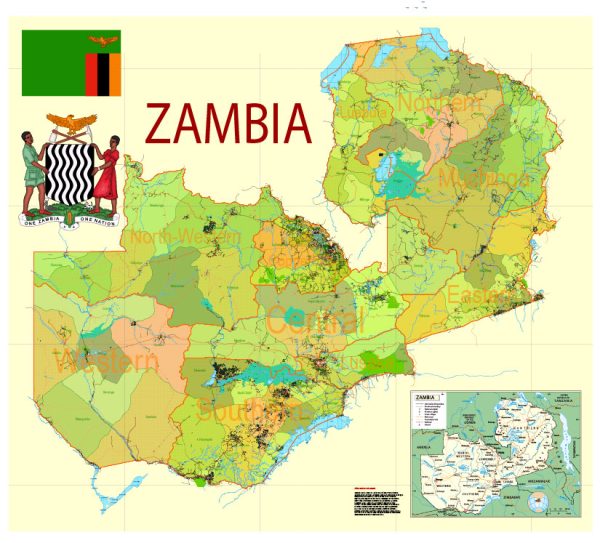Zambia, located in southern Africa, has a history of urban development that reflects its colonial past, struggles for independence, and post-colonial challenges. Here’s an overview of the history of urban development in Zambia:
- Pre-Colonial Period: Before the arrival of European colonizers, Zambia was home to various indigenous peoples with diverse cultures and societies. Urban centers, in the modern sense, were limited, and communities were often organized around agriculture, trade, and traditional governance structures.
- Colonial Period: Zambia, then known as Northern Rhodesia, was colonized by the British in the late 19th century. The colonial administration established mining and agricultural operations, leading to the development of urban centers around economic activities. Lusaka, the current capital, grew in importance as an administrative and economic hub.
- Mining and Urbanization: Mining, particularly of copper, became a key economic activity during the colonial period. Cities such as Kitwe and Ndola developed around the mining industry. The growth of these urban centers was driven by the demand for labor and infrastructure to support the extraction and transportation of copper.
- Independence (1964): Zambia gained independence from British rule in 1964. Kenneth Kaunda became the first President, and the country underwent significant political and social changes. The government aimed to address economic disparities inherited from the colonial era and focused on nation-building.
- Rural-Urban Migration: Post-independence, there was a significant influx of people from rural areas to urban centers in search of better economic opportunities. This migration placed pressure on existing urban infrastructure and services, leading to challenges such as housing shortages and inadequate sanitation.
- Socialist Policies: In the 1970s, Zambia adopted socialist policies under President Kaunda. The government took control of key industries, including mining, and pursued a strategy of nationalization. This had both positive and negative impacts on urban development, with investments in social services but also challenges in economic management.
- Economic Challenges and Structural Adjustments: In the 1980s and 1990s, Zambia faced economic challenges, including a decline in copper prices and increasing external debt. Structural adjustment programs, mandated by international financial institutions, led to economic reforms but also contributed to social challenges in urban areas.
- Democratic Transition: In 1991, Zambia transitioned to a multi-party democracy. Economic liberalization continued, and urban areas experienced changes in governance and economic policies. The country faced the dual challenges of urbanization and economic development.
- Contemporary Urban Development: In recent years, Zambia has continued to urbanize, with growing cities and towns. Lusaka remains the political and economic center, experiencing infrastructural developments, including improved transportation networks and housing projects.
- Challenges and Opportunities: Zambia faces ongoing challenges in urban development, including issues related to informal settlements, infrastructure, and services. At the same time, there are opportunities for sustainable urban planning and development, with a focus on inclusive growth, infrastructure improvement, and economic diversification.
The history of urban development in Zambia is closely tied to its economic activities, political changes, and efforts to address the legacies of colonialism. As the country continues to develop, there are ongoing efforts to create sustainable and inclusive urban environments.


 Author: Kirill Shrayber, Ph.D.
Author: Kirill Shrayber, Ph.D.